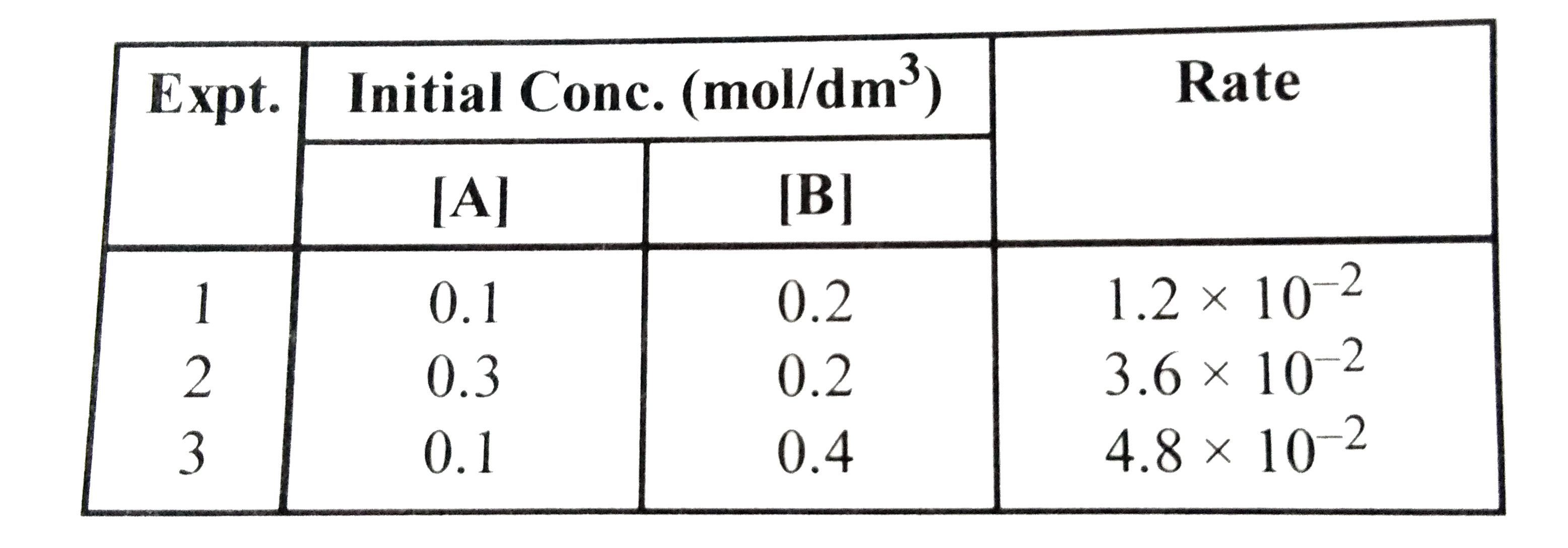In reaction, the following data were obtained.
Prove that it is a first order reaction.
Calculate the value of K in both cases by using first order equation.
Topper's Solved these Questions
- BOOK - OP TANDONCHAPTER - CHEMICAL KINETICSEXERCISE - OBJECTIVE QUESTIONS (LEVEL-A)192videos
CHEMICAL KINETICS
- BOOK - OP TANDONCHAPTER - CHEMICAL KINETICSEXERCISE - OBJECTIVE QUESTIONS (LEVEL-B) SET I48videos
CHEMICAL KINETICS
- BOOK - OP TANDONCHAPTER - CHEMICAL KINETICSEXERCISE - ILLUSTRATIONS34videos
CHEMICAL KINETICS
- BOOK - OP TANDONCHAPTER - CARBOXYLIC ACIDS AND THEIR DERIVATIVESEXERCISE - Integer4videos
CARBOXYLIC ACIDS AND THEIR DERIVATIVES
- BOOK - OP TANDONCHAPTER - Chemical Thermodynamics and ThermochemistryEXERCISE - Self Assessment (Integer type).3videos
Chemical Thermodynamics and Thermochemistry
Similar Questions
For the reaction A→B+C the following data were obtained : t(s)09001800[A]50.819.77.62
Prove that the reaction is of first order . (k1 is found to be constant )View SolutionThe catalytic decomposition of H2O was studied by titrating it at different intervals with KMnO4 and the following data were obtained :
t (second)06001200V of KMmO4(mL)22.813.88.3
Calculate the velocity constant for the reaction assuming it to be a first order reaction.View Solution
Knowledge Check
- Question 1 - Select One
For a creactionj, the following data were obtained:

the order of reaction is:A2B1C0Dfractional - Question 2 - Select One
For a gaseous reaction, the following data were recorded :

The order of reaction is :AsecondBfirstCzeroDfractional - Question 3 - Select One
The following data were obtained for the thermal decomposition of nitrous oxide on finely divided gold :
t (minutes)020406080Concentration of N2O(molL−1)0.100.080.060.040.02
The order of reaction is :AzeroB1C2D3
For the reaction A+B→C. The following data were obtained. In the first experiment, when the initial concentrations of both A and B are 0.1M, the observed initial rate of formation of C is 1×10−4mollitre−1minute−1. In the second experiment when the initial concentrations of A and B are 0.1M and 0.3M, the initial rate is 9.0×10−4molliter−1minute−1. In the third experiment when the initial concentrations of both A and B are 0.3M the initial rate is 2.7×10−3mollitre−1minute−1.
(a) Write rate law for this reaction.
(b) Calculate the value of specific rate constant for this reaction.View SolutionIn a pseudo first order hydrolysis of ester in water the following results were obtained :
t/s0306090[Ester]M0.550.310.170.085
Calculate the average rate of reaction between the time interval 30 to 60 seconds.View SolutionThe concentration of "R" in the reaction R→P was measured as a function of time and the following data is obtained [[R]1098.17.29t( minutes )0.0102030]
Order of the reaction isView SolutionFor the reaction between A and B
A+B→ product
the following rate data were obtained .

the reaction isView SolutionThe ratio of t0.75 and t0.5 for first order reaction :-
View Solution

